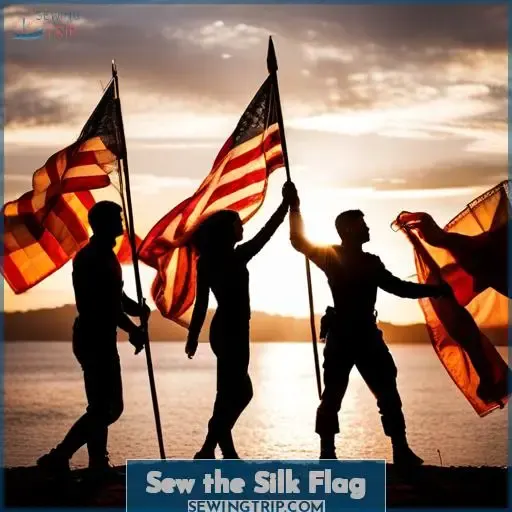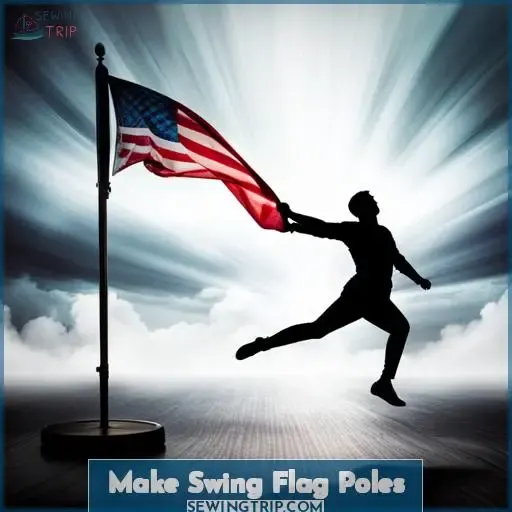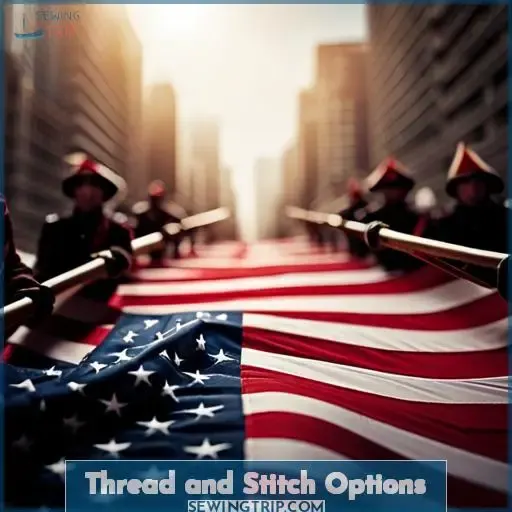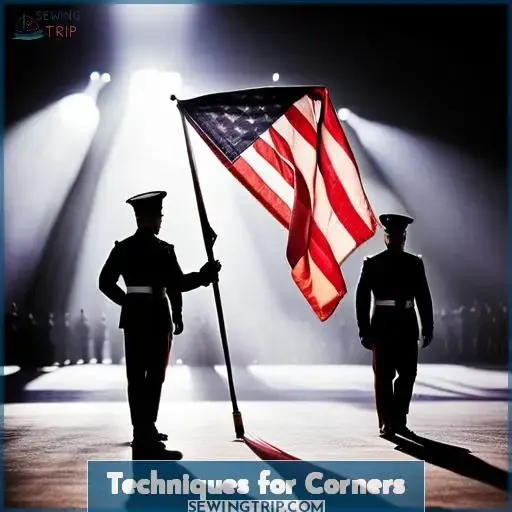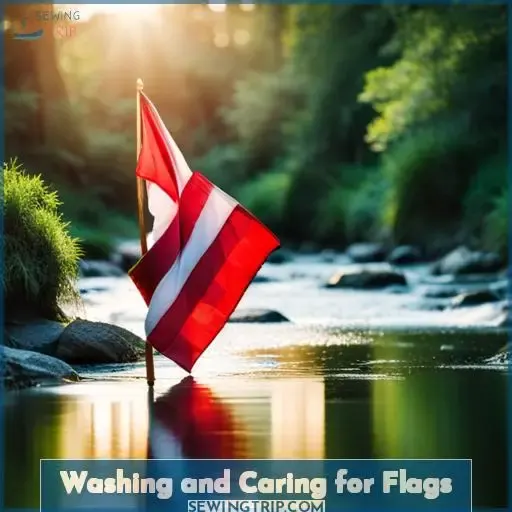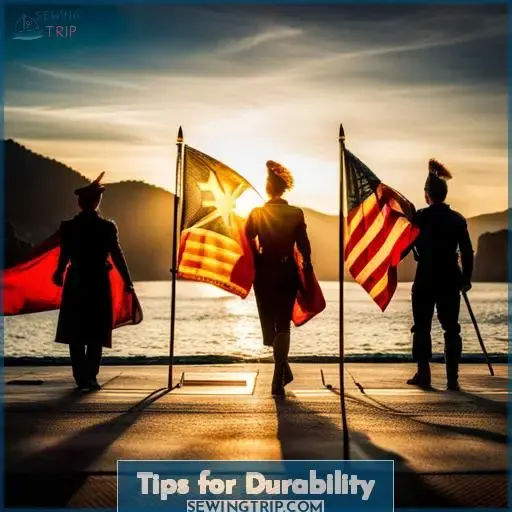This site is supported by our readers. We may earn a commission, at no cost to you, if you purchase through links.
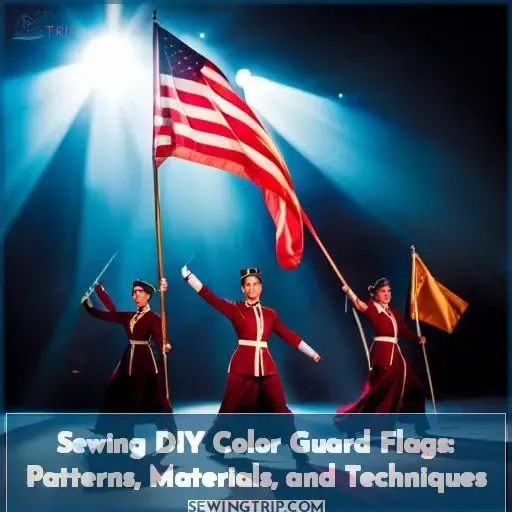 Unleash your creativity and transform a simple piece of silk into a vibrant symbol of expression.
Unleash your creativity and transform a simple piece of silk into a vibrant symbol of expression.
With just a few simple steps, you’ll be able to craft your own personalized color guard flag, perfect for showcasing your passion and skill.
Let’s dive into the world of DIY color guard flags and discover the techniques, patterns, and materials you need to create a masterpiece that commands attention.
Techniques:
- Learn the basics of sewing and fabric manipulation.
- Master the art of appliqué and embroidery to add intricate designs.
- Experiment with different painting and dyeing techniques to achieve unique color effects.
Patterns:
- Choose from a variety of pre-made patterns or create your own unique design.
- Consider the size, shape, and overall aesthetic you want to achieve.
- Make sure the pattern is easy to follow and suitable for your skill level.
Materials:
- Select high-quality silk fabric that is durable and drapes beautifully.
- Gather threads, needles, scissors, and other basic sewing supplies.
- Choose paints, dyes, and other embellishments to add color and texture.
Table Of Contents
Key Takeaways
- Use high-quality, durable silk fabric and select a suitable pattern for the design.
- Prepare the fabric by tracing the pattern, cutting precisely with heated tools, and folding edges.
- Sew the flag starting with the pocket – fold, iron, pin and sew along the seam.
- Consider visual details like color choices and embellishments for visual interest.
Gather Materials and Make Pattern
First, lay your fabric flat and use a heated wood-burning tool to carefully cut out the flag pattern you traced earlier.
Next, fold over each side twice, except the pocket edge, iron, and pin the folds to neatly secure the edges.
Then, ensure corners are crisp before sewing.
Cutting the Silk
After finalizing your pattern and preparing your workspace, precisely trace the outlines onto the silk with a pencil.
Carefully cut along the markings with a heated wood-burning tool to cut the material and seal the edges in one step.
- Use a ruler or yardstick when tracing straight lines.
- Allow extra margin beyond the fold lines.
- Work slowly and methodically for best results.
Ironing and Pinning Material
You’ll then want to fold each edge (except the pocket side) over twice. This prepares the edges to be sewn while leaving one side open for the pocket.
| Folding Method | Description | Tips |
|---|---|---|
| Single Fold | Fold over once | Least durable |
| Double Fold | Fold over twice | Better durability |
| Tripe Fold | Fold over three times | Most durable |
Ironing secures the folds. Pinning them ensures they stay in place when transported to the sewing machine.
Take care in pressing folds and placing pins. Well-prepared edges lead to cleanly sewn seams and sturdy, long-lasting flags.
Sew the Silk Flag
Next, fold the pocket in, ensuring it’s straight.
Iron and pin the fold to secure it, then sew 2 paths down the pocket seam, doubling up on edges for strength.
Finally, cut remaining threads, iron the finished flag, and it’s ready for the pole.
Making the Pocket
After ironing and pinning the folded pocket, you’ll sew two paths down the seam to secure it.
Reinforce the pocket by stitching a second line parallel to the first for durability.
Consider creative pocket variations like adding beads or embroidery for visual interest when performing.
Check that the pocket width fits your flag pole before finalizing.
Final Steps
Having sewn the pocket and secured the edges, cut any remaining threads.
Iron the finished flag before putting it on a pole.
Once you have completed these steps, consider color choices for your flag to enhance its visual effect during performances.
You can also explore embellishment ideas such as adding sequins or decorative stitching to make your flag stand out even more.
When it comes to storage solutions and transportation methods, invest in a durable bag or case that will protect your flags while on the move.
Finally, if you’re looking for performance enhancements with swing flags, consider using a solid pole slightly larger than the silk for better control and longer swings.
Make Swing Flag Poles
To make your own swing flag poles:
-
Gather the necessary pole materials:
- 3/4-inch wood dowel
- Paint and caps (if desired)
- Poly silk for the flag
-
Prepare the pole:
- Cover it with paint, stain, or tape to decorate it.
- Optionally, glue caps on the ends.
-
Attach the practice silk flag securely to the pole:
- Use electrical tape at the top and bottom.
Gather Pole Materials
All materials must be gathered for making DIY swing flag poles prior to construction:
- 36-inch wood dowel
- Paint or wood stain
- Dowel caps or rubber caps (optional)
- Wood glue (optional)
Ensure an open workspace covered in cardboard when beginning assembly.
Account for adhesive attachment methods when selecting steel pole options.
Remain flexible for creative adjustments if needed during the process.
Cover and Decorate Pole
Once you have gathered the pole materials, cover the dowel with paint, stain, or electrical tape.
Glue on optional caps for personalized finishes.
Get creative with wrappings like ribbons or fabrics for unique adornments.
Add bells, feathers, or other embellishments for customized accents.
Consider coordinating colors and textures when decorating the pole.
Attach Flag to Pole
Frequently, you’ll attach the flag to the pole using electrical tape at the top and bottom.
Consider wrapping wax paper under the tape to prevent tearing silk when removing.
Decorate with fabric paints or glitters for creative embellishments.
For performance, select lightweight yet durable materials, allowing dynamic flag tosses.
Reinforce stress points with extra tape strips as preventative maintenance.
Hand sew a thumb guard for grip comfort and slip prevention during vigorous sets.
With planning and care, your custom flags will withstand seasons of high-flying routines.
Size and Shape Considerations
When designing your own flags, first determine the desired finished dimensions based on common color guard flag sizes.
Next, draft shape templates allowing extra material for folded, secured edges and the pole pocket.
Finally, cut fabric according to the pattern, allowing adequate seam allowance to assemble the shape securely around the pole.
Flag Size Specifications
Having attached the flag to the pole, consider the size specifications for your performance flags.
You’ll want to design your flags based on the common dimensions used in color guard:
- 27 x 44 standard size
- 24 x 36 junior size
- 30 x 50 large size
- Custom sizing for creative embellishments
Flag Shape Templates
Patterns, Materials, and Techniques:
You can then trace your desired flag shapes onto paper to create reusable templates for cutting uniform silks. Consider classic flame shapes or get creative with adjustments for visual impact.
Design challenges arise, but with thumb guards, fly guards, and crafting fun, sewing color guard swing flags using personalized flag shape templates brings enjoyment.
Pole Pocket Allowances
You’ll often need to account for extra fabric when cutting out the pole pocket so the flag fits snugly yet spins freely on the dowel.
When planning your flag design, consider:
- Adding 1-2 inches to pocket width
- Allowing a thumb guard space
- Planning for a fly guard flap
These small details make a big difference in ensuring your homemade flags move smoothly during performances.
Thread and Stitch Options
Picking the right thread and stitch is crucial for a durable flag.
For color guard flags, choose a quality polyester or cotton thread that matches or blends with the silk color.
A stronger bonded nylon or polyester thread resists UV rays and withstands frequent spinning.
Use a tight backstitch or zigzag stitch and reinforce stress points and edges with extra passes.
When embellishing, select decorative threads like rayon or metallic, and stitches like satin stitch or blanket stitch to create custom details.
Alternating colors and patterns makes unique designs.
Always test on scraps first and check tension.
With the proper thread and stitches, your flags will last through countless performances.
Techniques for Corners
When pinning and sewing corners, you’re ensuring structural integrity by doubling up on edges.
To reinforce corners:
-
Fold corners precisely, aligning edges.
Use pins perpendicular to folds.
-
Stitch corner seams twice for strength.
Stitch parallel paths 1/4 apart.
-
Consider decorative corner treatments.
Try angular, rounded, or asymmetric shapes.
Get creative!
Hemmed, reinforced corners are key for a long-lasting, durable flag that will hold up during routines.
Take time to precisely fold, pin, and reinforce corners with a double seam.
Thoughtful corner construction contributes to a polished, professional flag.
Washing and Caring for Flags
To ensure the longevity and vibrant appearance of your color guard flags, it’s important to properly wash and care for them.
When washing, use a gentle soap or detergent and cold water. Avoid harsh chemicals.
Care techniques:
- Washing: Use gentle soap, cold water.
- Drying: Air dry out of direct sunlight.
- Storing: Fold neatly, keep in a breathable fabric bag.
- Stain Removal: Spot clean gently with mild detergent.
- Weather Protection: Avoid leaving in rain, mist, or snow.
Handle flags with care when transporting. Check for damage after performances. Proper storage and cleaning will maintain the vibrancy and enhance the lifespan of your hand-sewn flags.
Tips for Durability
After washing your flags, you’ll want to take some steps to increase their durability so your hard work lasts:
- Reinforce high-stress areas like corners and edges with extra stitching or binding tape.
- Consider weatherproofing spray to help the fabric resist sun damage and water. Test on scraps first.
- Attach a thumb guard or extra binding to the hoisting edge. This protects against wear from raising and lowering on the pole.
With a few strategic durability boosts, your custom flags will withstand seasons of routines.
Frequently Asked Questions (FAQs)
What fabric colors work best for visibility at a distance? Bright, bold colors like red, yellow, blue, etc. tend to show up better from far away compared to pastels or darker shades.
Opt for bold primary colors like red, yellow, and royal blue.
You’ll need hues that pop against green grass or tan dirt to maximize visibility from the stands.
Steer clear of pale or dark shades that get washed out or blend in.
Bright solids make your flags stand out.
How can I add sparkle or sheen to my flag’s fabric? Metallic threads or fabric paints with glitter mixed in can add some shimmer. Be careful not to overdo it though.
Add sheen by running glittery threads through hems.
Or, paint metallic acrylics sparingly.
Shimmer subtly for striking sparkle.
What if my flag gets damaged during a performance? Have backup flags on hand and be prepared to gracefully swap it out if needed. Don’t let it throw off your routine.
Keep calm and carry on.
Briefly inspect for damage.
If major, swap flags seamlessly.
If minor, dance through it beautifully.
Your skill transcends props.
Are there any rules about imagery or symbols on flags? Check with your team director or event guidelines, as some may restrict political, inappropriate, or copyrighted images.
Carefully research event rules before designing your flags.
While creative expression is encouraged, inappropriate or political imagery may be prohibited.
Focus on skill and choreography, not shock value.
How can I display my finished flags at home? Consider using flag holders, wall mounts, or stands. You could also frame your favorite one as art.
Display those beautiful flags with pride!
Mount them on your walls as glorious works of art.
Let their vibrant colors and graceful movements soar in your home.
Frame your favorites to cherish for a lifetime.
Conclusion
You’re now equipped with the necessary techniques, patterns, and materials to create a one-of-a-kind DIY color guard flag.
From properly cutting and pinning the silk, to sewing sturdy pockets and poles, you have the skills to transform a simple piece of fabric into a memorable and personalized flag.
So go ahead, unleash your creativity!
Sewing your own color guard flag is an accomplishing way to blend passion, hard work, and artistic expression.


